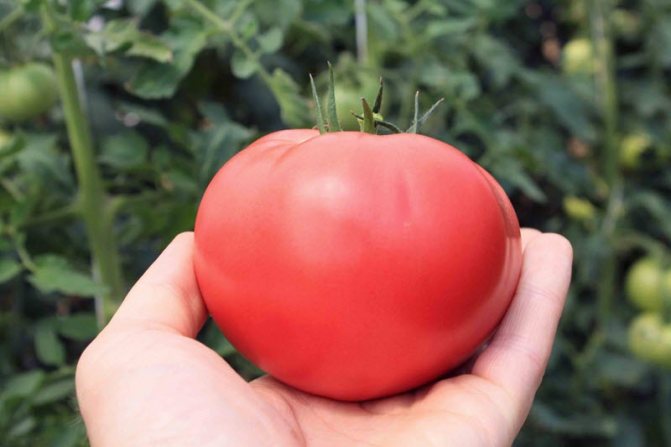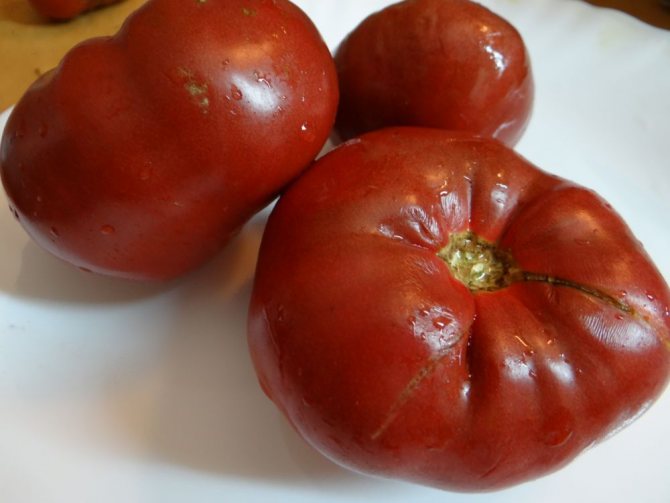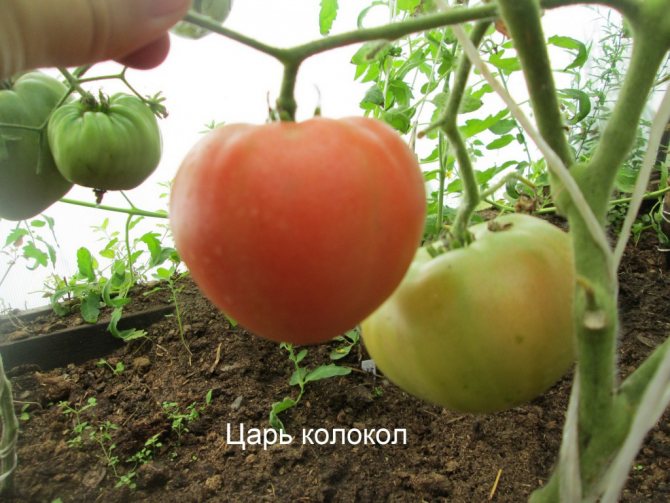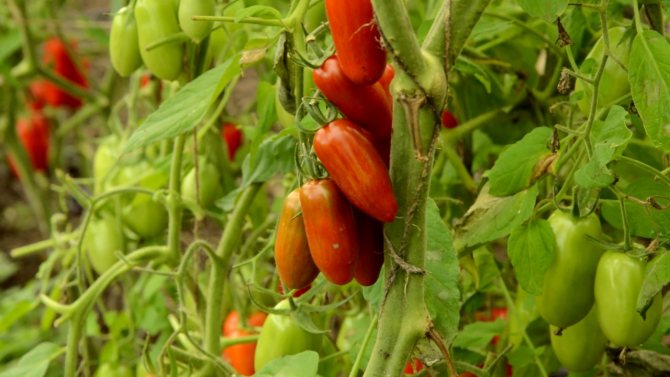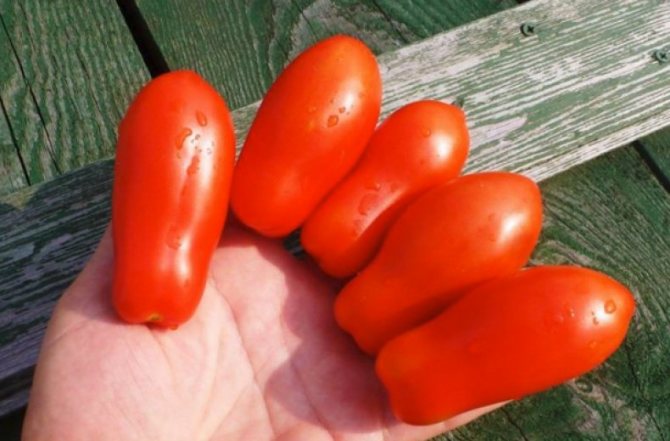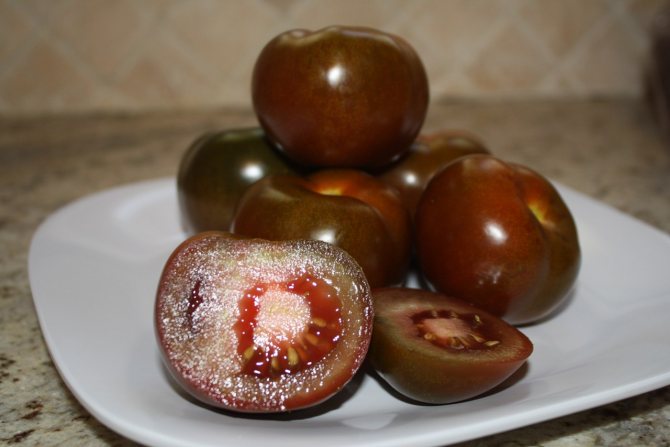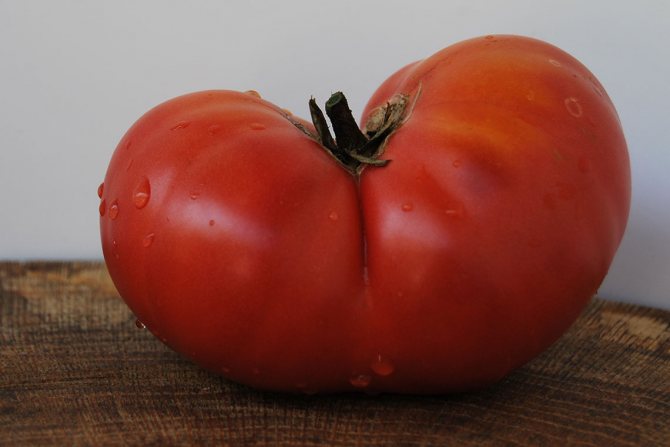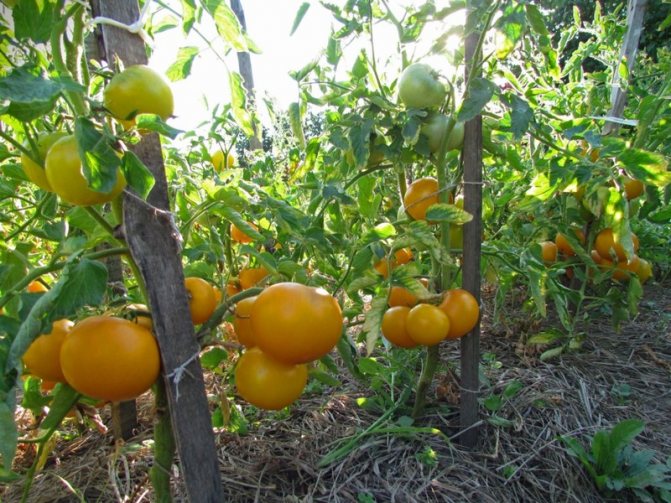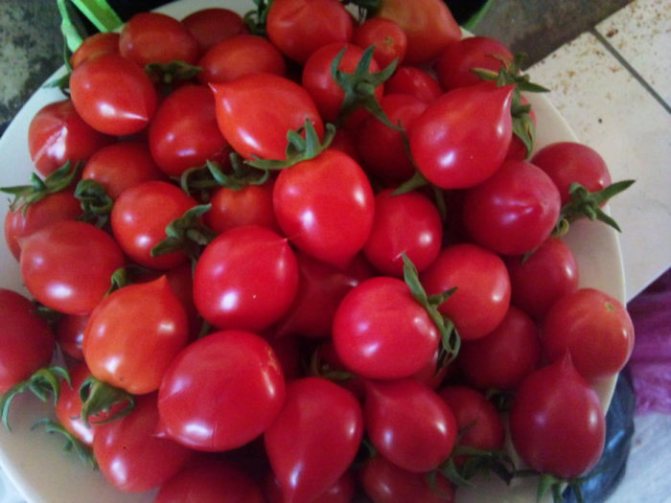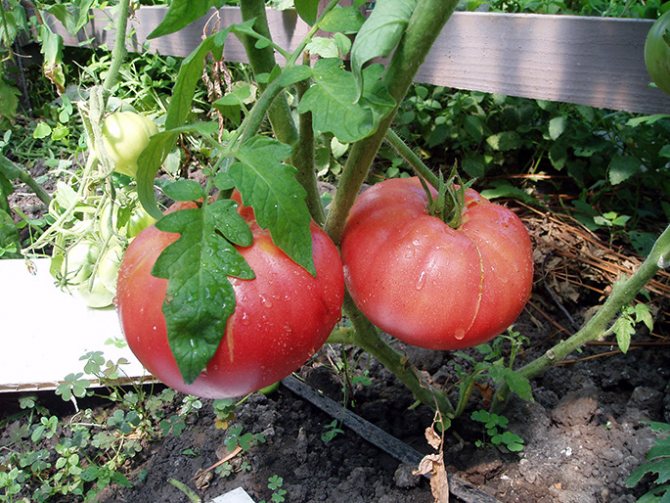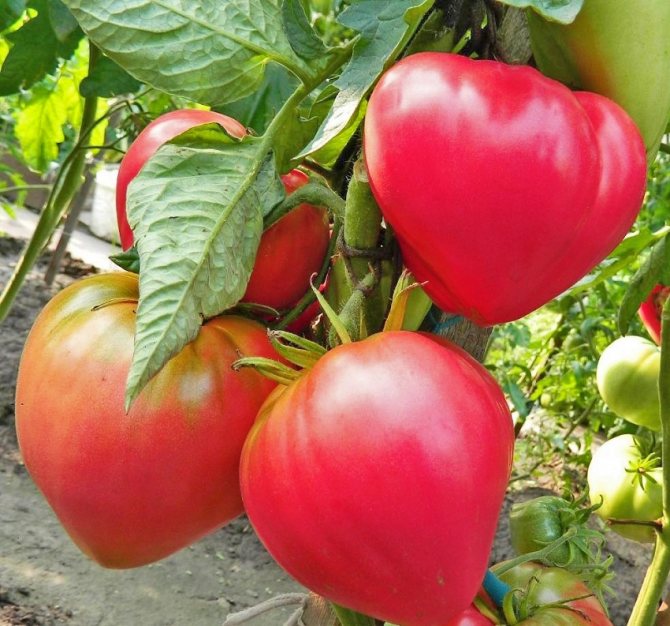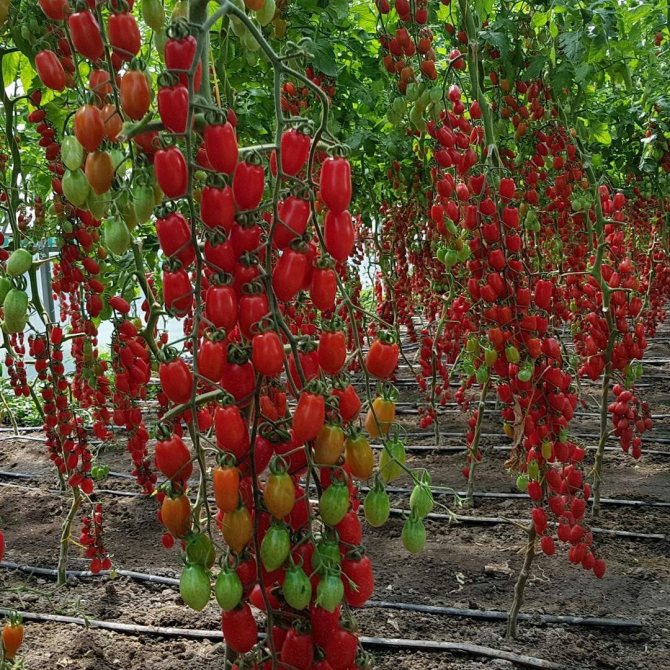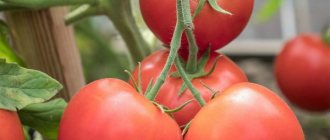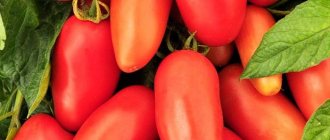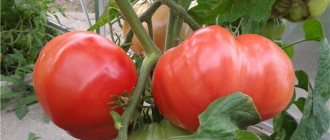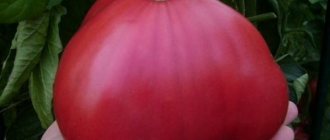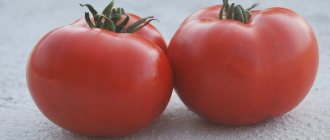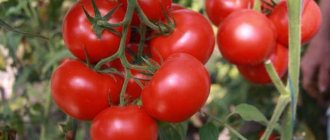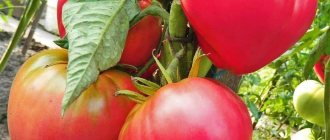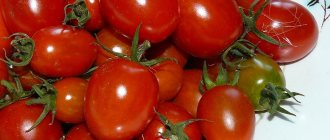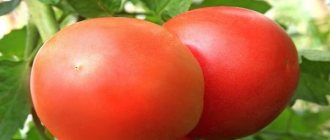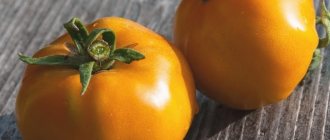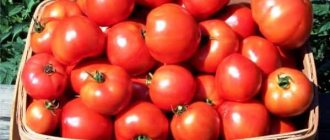Home / Garden / Tomatoes
Back to
Published: 22.10.2018
Reading time: 6 minutes
0
2192
2 / 5 ( 1 voice)
2 / 5 ( 1 voice)
One of the most popular vegetable crops on the plots is striking in the varietal variety offered by seed producers. Most experienced gardeners prefer to plant several varieties of tomatoes for different purposes at once. Sweet varieties are especially popular. They are appreciated for their special sugar content, which is preserved even after heat treatment and gives the dishes an unsurpassed taste.
We offer an overview of varieties of popular sweet tomatoes, compiled from reviews of experienced gardeners and share information on how to grow delicious, aromatic tomatoes.
- 1 For open ground
- 2 For greenhouses
- 3 Universal varieties
- 4 How to increase sugar content
The best large varieties
Today there are many varietal varieties of tomatoes that can be cultivated in any type of soil, but as for greenhouses (including polycarbonate), more often summer residents choose the following large-fruited varieties of tomatoes.
Did you know? On the territory of Europe in the 15th – 16th centuries, tomatoes were grown only as ornamental plants for gardens, which is mentioned in Dutch books. The product began to be consumed only several centuries later.
Altai yellow
A medium-early ripening variety with large, flat-round yellow fruits. The peel of medium thickness hides juicy pulp underneath, with a subtle sourness in the taste. Tomato bushes grow up to 2 m in height, and at least 4 months pass from the appearance of the first shoots to the moment of picking the tomatoes.
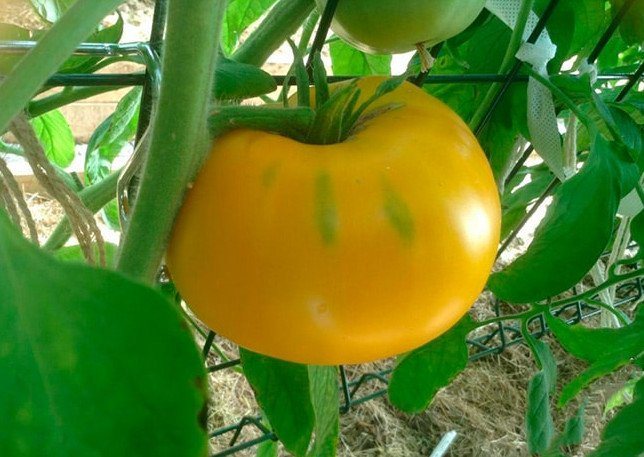
Bull heart red
The variety belongs to the mid-late varieties of tomato, since at least 120-125 days pass from the moment of planting to harvest. It can be planted both in a greenhouse and in an unprotected substrate, where the plant reaches 2 meters in height. Fruits in the shape of a heart are large, with an average density of pulp and weighing 200-400 g, although some specimens can grow up to 600 g. The taste of the fleshy pulp is pronounced, with sourness. In an open area, up to 5 kg of harvest is harvested from 1 m², and up to 12 kg of ripe tomatoes are obtained in a greenhouse from the same area.
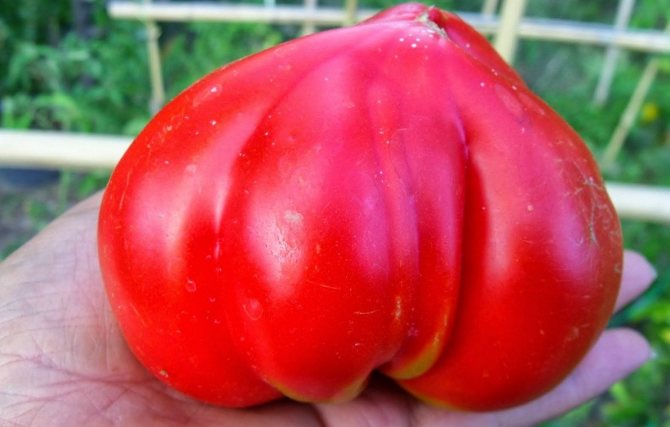

Gigant-10 Novikov
One of the well-known large-fruit varieties for greenhouses. The bushes of the plant grow to a height of two meters and begin to bear fruit 120-135 days after germination. On each of the fruit clusters, at least 5 rounded-flat fruits weighing 0.4–0.5 kg are formed. When mature, tomatoes are pink-raspberry-colored, although very large specimens become even redder over time. The pulp is fleshy, with a characteristic tomato smell and a slight sourness in the taste. Observing agrotechnical requirements for cultivation, up to 3 kg of fruits are harvested from one bush, which are suitable for preparing fresh dishes (salads, decorations) and for processing into juice.
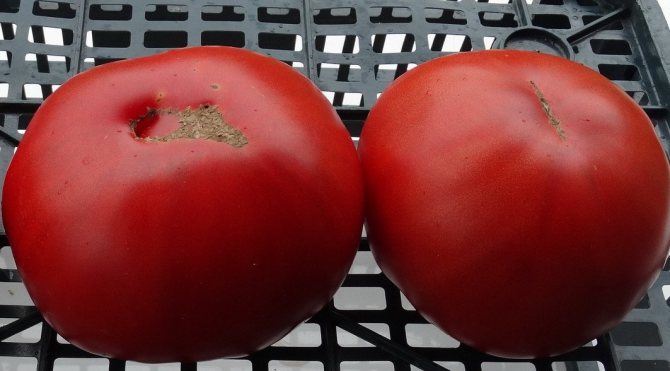

An amateur's dream
This variety belongs to the early ripening crops for salad purposes. From the time of emergence to the first harvest, 105–110 days pass. Bushes - indeterminate, 1.5 m high. Tomatoes - flat-round shape, bright red, weighing 250-300 g.The pulp is fleshy, very juicy in taste, so it can be used for processing into tomato puree or homemade ketchup. When cultivated in a greenhouse, up to 10 kg of tomatoes are harvested from a tomato bush.
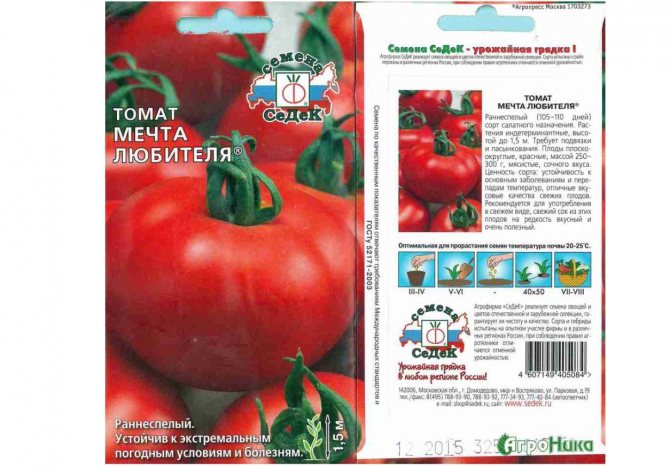

Yaroslav F-1
Large-fruited hybrid variety of late ripening (about 150 days pass from germination to harvesting). The bush reaches 2 m and brings a bountiful harvest - up to 6 kg per bush.
Important! Hybrid Yaroslav has increased resistance to tobacco mosaic and cladosporium disease, therefore, does not require standard prophylactic treatments.
The mass of one flat-round red fruit varies in the range of 400-600 g. The pulp is firm, aromatic and sweet, so it can be used fresh.
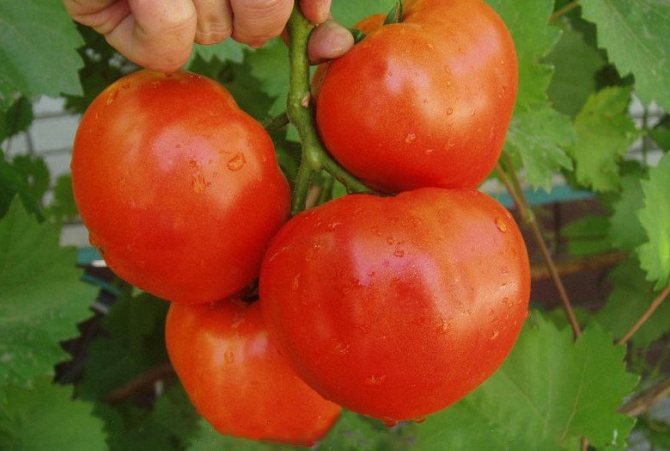

For open ground
In open beds, it is advisable to plant varieties and hybrids, the ripening period of which corresponds to the duration of the summer season in a particular region. Tomatoes must be fully ripe before the day and night temperatures start to swell or the rainy season arrives. Only fully ripe tomatoes acquire a sugar flavor. To do this, choose varieties that yield a harvest in 3-4 months or are resistant to low temperatures.
- Pink Honey
One of the leaders in yield and unpretentiousness. Requires support for a medium-sized bush and a garter of fruit clusters with large (up to 1.2 kg) tomatoes. It is appreciated by gardeners for its wonderful sweet taste. Fruiting in August, 3.5 months after sowing. Sweet tomatoes are used for sauces, lecho and eaten fresh. The only drawback is the short shelf life.
Have questions? Ask and get useful advice from professional gardeners and experienced summer residents. Ask a question >>
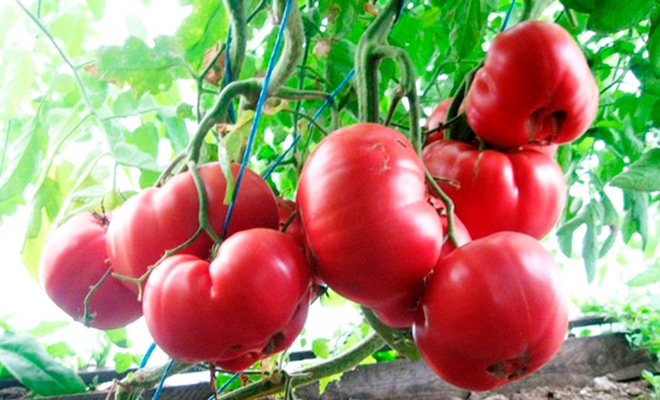

- The Tsar Bell
Large-fruited variety, resistant to bad weather conditions and most nightshade diseases. Fleshy fruits weighing 600 g or more contain an increased amount of beta-carotene. Does not crack, can be stored for a long time. Tomatoes are used for vitamin snacks and sauces. There are few seeds in the dark red pulp. Needs removal of stepsons, formation of a bush.
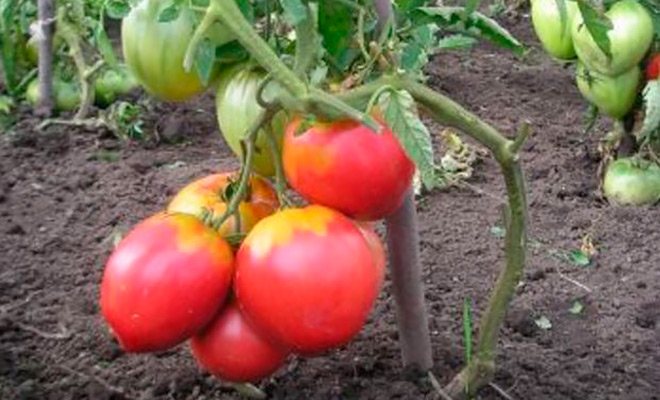

- Appetizing dark
Determinant, cold-resistant variety. Rounded fruits, after ripening, become a deep pink color with a wine tint. Juicy, sugary pulp is intended for salads, fresh snacks and sauces. The weight of an average specimen is 450 g. The ripening period is 115 days.
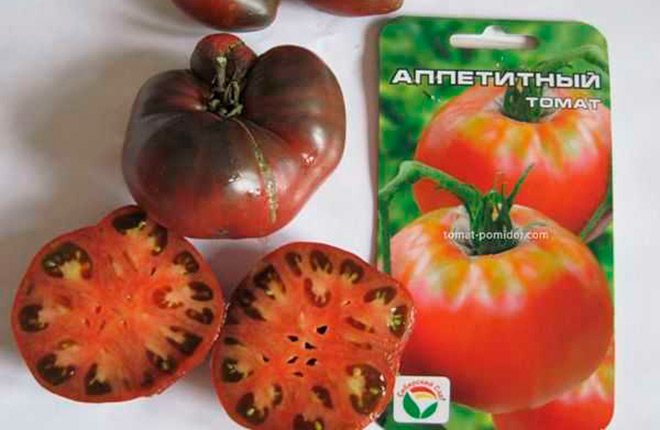

- Grandee
Differs in stable yield when planted outdoors, even in cool summers. Fruits weighing 250-300 g have the shape of an elongated heart with a slight ribbing. The peel is crimson, the pulp is juicy. It grows up to a meter, yields a harvest in 3.5 months.
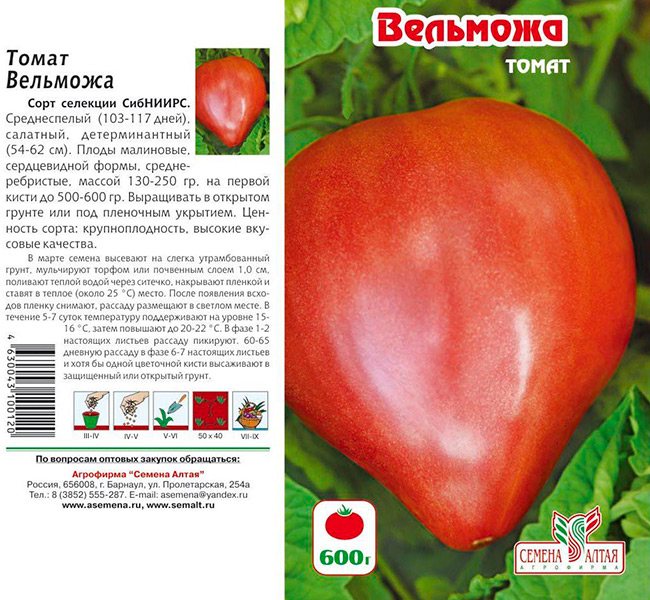

- Sugar pinkies F1
The hybrid has a high yield, there are up to 10 kg of miniature tomatoes per 1 m2. Ripens in 3 months, does not crack or crumble from the branch. Fruits are elongated, dark orange in color. Belongs to the group of cherry tomatoes, the mass of one tomato is 30 g. The pulp is sugar, aromatic. Well suited for canning whole fruits, salads and garnishing.
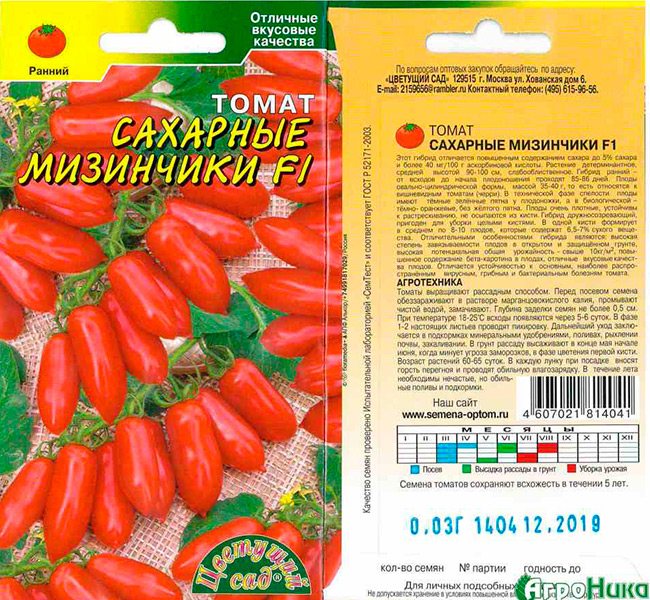

Large-fruited sweet tomatoes for greenhouses
Like small varieties, large-fruited varieties are not always sweet, so if sour tomatoes are not to your taste, consider the following greenhouse options.
It is interesting to read how to process tomatoes from caterpillars in a greenhouse.
King of the early
Variety of determinant type with low (50-70 cm), vigorous plants and rounded, slightly flattened fruits, which develop on separate clusters, and the weight of the first specimens is 250-300 g, and the subsequent ones - 200-250 g each. The pulp of tomatoes contains a lot solids and sugar, but this does not prevent it from remaining juicy.
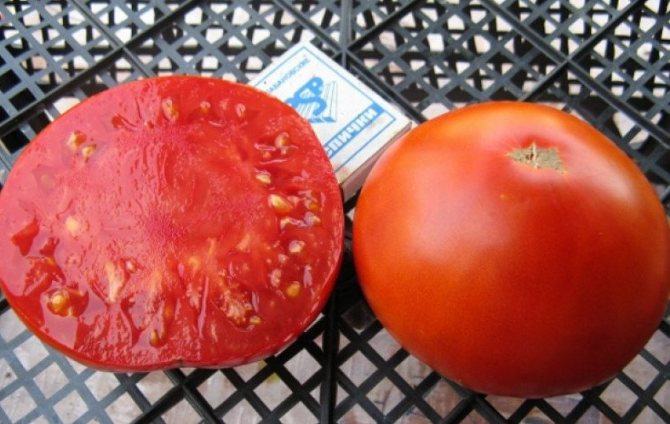

The king of the early is suitable for any purpose, therefore it can be used both fresh and for processing into juices and purees. Having organized good conditions for the growth and development of tomatoes, it is possible to harvest 5–6 kg of harvest from one bush, and the first tomatoes will be ready for plucking in 85 days (the King of the Early refers to early-ripening cultivated plants).
Important! The variety King of the Early prefers spacious areas, with a rare placement of tomato bushes. If space is limited, you will have to regularly remove excess leaves and lateral branches from the plants, thereby avoiding thickening of the plantings.
Cardinal
This mid-early variety is classified as salad, since large, flat-round red fruits, 200-600 g each, have juicy, sweet and sour pulp, characterized by a high level of nutritional value. There are few seed chambers, so Cardinal is suitable for making ketchup and lecho (pickled tomatoes will not work out of it). More than 10 kg of crop is harvested from 1 m² of plantings with a height of 170 cm.
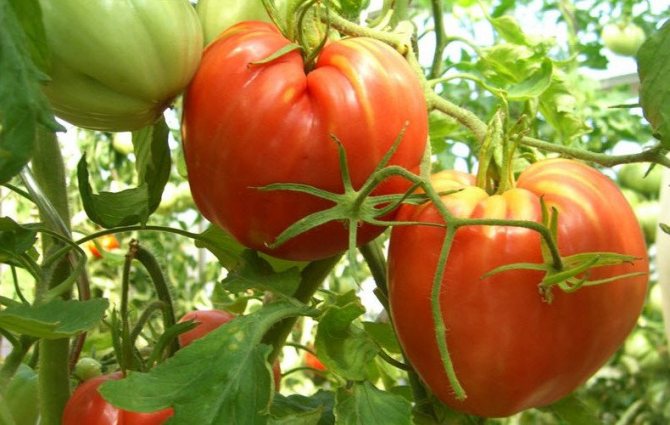

Grandma's secret
Another mid-early variety. The bushes are indeterminate, grow up to 1.7 m in height and form large flat-round fruits on the clusters, 300-600 g each (individual specimens can weigh up to 1 kg). The color of highly ribbed tomatoes varies from light to dark raspberry, and the yield reaches 14-15 kg per 1 m². The purpose is universal, but usually tomatoes are used in the preparation of salads.
Learn more about the “Babushkin's Secret” tomato variety.
Advantages and disadvantages
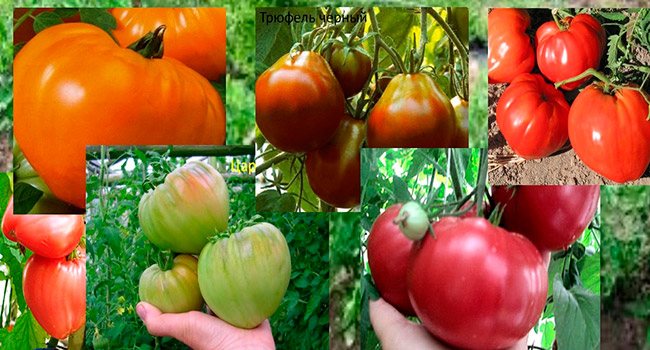

Large-fruited tomato varieties are an ideal choice for both the experienced and the novice gardener. The name "large tomatoes" means that the fruit weighs 300 grams or more. Gardeners manage to grow individual fruits up to 1.5 kg.
And the world's largest tomato weighing 3.8 kg (8.41 lb) was grown by a farmer from Minnesota (USA). This figure is recorded in the Guinness Book of Records, and Dan McCoy received an award of $ 1000. Here's another incentive for you to grow such varieties of tomatoes - maybe your harvest will be even larger!
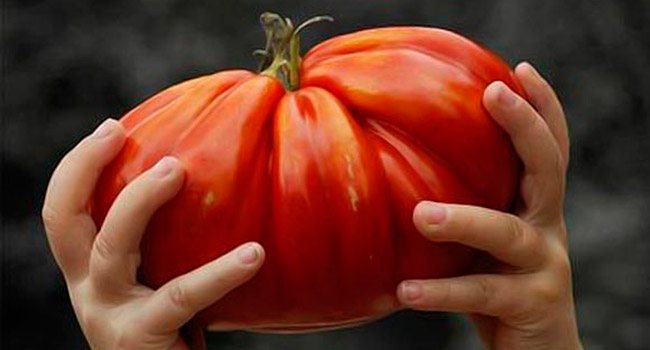

Large-fruited tomatoes have many advantages:
- they are distinguished by good taste;
- the harvest can be obtained throughout the garden season, since among them there are very early varieties, late ones, with extended fruiting;
- large tomatoes are in high commercial demand in the market and are profitable to sell;
- they are most suitable for making juice and other preparations;
- they are distinguished by high productivity;
- allow you to rationally use the area in the beds and in greenhouses.
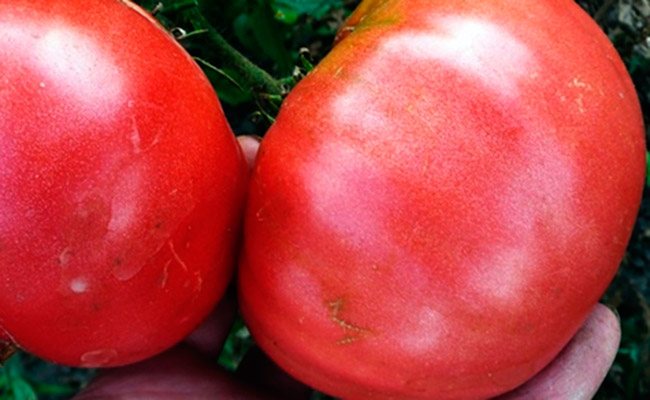

Also, it is worth noting that the varieties of large sweet tomatoes are distinguished by the greatest variety in color and shape of the fruit. You can find red, pink, yellow, white, chocolate, multi-colored, green-fruited. The shape can be round, flat, elongated, plum and pepper-shaped, ribbed.
With all the advantages, large-fruited varieties and hybrids of tomatoes have some disadvantages, or rather, they should be called features:
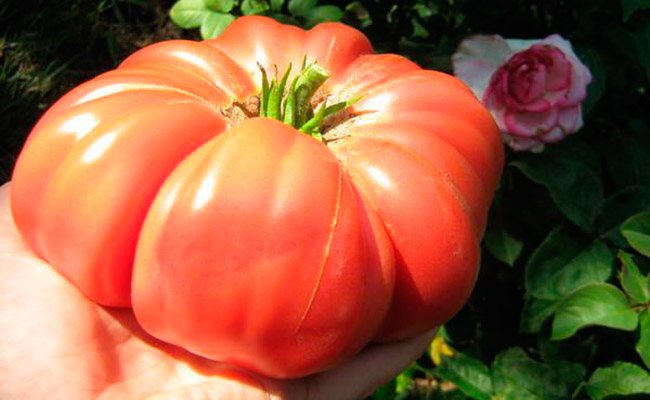

- large fruits are not suitable for canning as a whole (they do not crawl into the neck of the jar), and when cut into pieces, they crumble, due to the delicate consistency of the pulp;
- they have a thinner and more vulnerable skin, therefore, transportation and storage require special conditions;
- a lack of moisture during the growing process reduces the yield and size of the fruits, and an excess leads to cracking and a decrease in the quality of tomatoes;
- Due to the high yield and size of the fruits, the plants require fertile soil with the introduction of nutrients.
But this is completely covered by the taste and other advantages that they possess. We bring their review with photos and descriptions to your attention further.
Technology for growing large-fruited tomatoes
In an unheated greenhouse, grown seedlings are planted in mid-spring (April-May), while young seedlings will have to be regularly ventilated, protecting them from high humidity.It is advisable to organize beds for seedlings along the greenhouse, and their number depends on the width of the shelter.
The soil for tomatoes begins to be prepared 3 days before transplanting, spilling with a hot solution of potassium permanganate (1 g of substance per 1 liter of clean water).
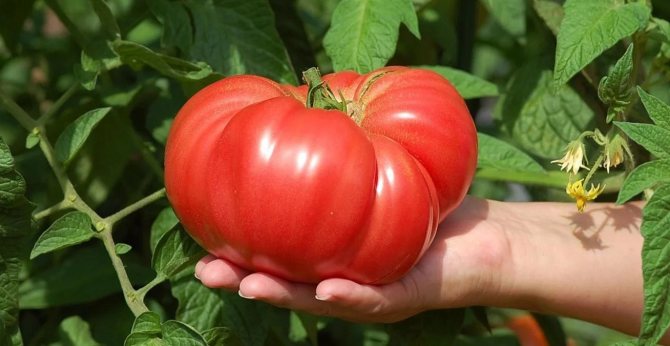

The distance between neighboring plants should be at least 60 cm.As soon as the transplanting process is over, it is advisable to pinch the shoots immediately, leaving no more than two stems (small 2-centimeter stumps should remain in place of the cut side branches). If such shoots are not removed in a timely manner, the harvest will be too small.
You can limit the growth of bushes by pinching their tops, leaving no more than 3 leaves above the brush.
Tall bushes need to be tied to supports, otherwise they will break under the weight of the fruit. If possible, it is better to tie the brushes with tomatoes separately, but otherwise the rules for caring for large-fruited varieties remain the same as when growing other varieties of tomatoes.
Did you know? The tomato plant is gaining popularity in the world, which simultaneously gives a crop of tomatoes and potatoes, released on the British market in 2013.
Where to grow large tomatoes
Large-fruited varieties of tomatoes of different ripening periods are grown in open ground, greenhouses. Large-fruited tomato varieties are divided into early, medium and late.
Attention! Late varieties of large tomatoes can be grown outdoors only in the south; in the rest of the Russian Federation, they should be grown exclusively in greenhouses, in greenhouses.
On the labels or bags with seeds, it is indicated how tall a given tomato bush will be, so you can understand where it is better to grow this or that variety.
Determinant. Large tomatoes of these varieties can be successfully grown outdoors. They do not need stealing. However, if you want to collect very large tomato fruits, you should pick off the lower leaves before the first ovary, remove several ovaries, leaving only 3-4 on the bush. In this case, it is better to tie up bushes even undersized, so that they do not fall under the weight of ripe large fruits of tomatoes.
Semi-determinant. Can be grown both outdoors and indoors. The plant can restrict its growth at any stage of its growth. To get very large tomatoes, it is better to grow them indoors, lead in two stems.
Indeterminate. They are distinguished by their high growth, they need more time for the tomatoes to ripen. Even in the south, these varieties are best grown in greenhouses. Be sure to tie up such large varieties. They have a long fruiting period and are more often grown for the purpose of commercial production.
Timing and features of harvesting
The timing of harvesting tomatoes directly depends on the characteristics of a particular variety: the early ones are ready for picking already 90 days after germination, and the later ones will ripen no earlier than 140 days. Features of cutting and further storage of vegetables also depend on the varietal characteristics of the planted crop. So, fruits with a thin skin should be placed in boxes only in 2-3 layers, otherwise, under the weight of the upper layers, the lower ones will begin to be crushed, and it is convenient to cut tomatoes with garden shears, which will shorten the harvest time.
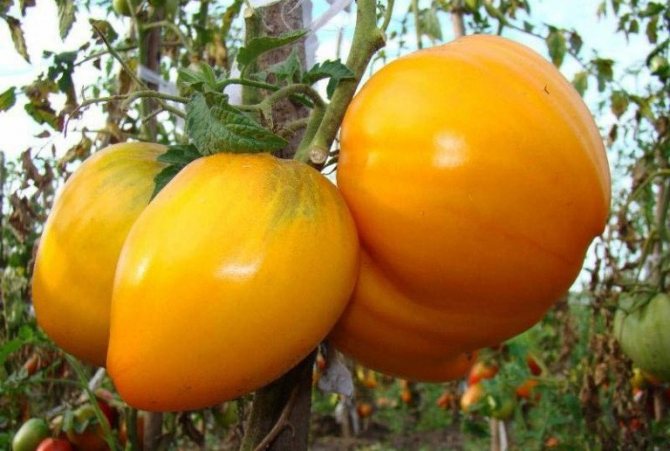

Large varieties of tomatoes are a good solution for planting in closed soil, but only if the summer resident is more interested in fresh vegetables, and not in harvesting whole-fruited preservation. Having picked up the right variety and organized proper care for it, there is no doubt about getting a bountiful harvest.
Care features
Caring for tomatoes of a variety Meaty sugary simple. Plants of this variety need protection from fungal diseases and pests, therefore loosening the soil and removing weeds are mandatory care processes.When weeding, you need to deepen your garden tools by no more than 4 cm.
If there is moderate rainfall in your region, it is enough to water the tomatoes once a week. In hot climates, the frequency of watering is increased by 2 times a week.
Fertilization
Top dressing of tomatoes Meaty sugary is carried out with an interval of 15 days:
- the first fertilizer is applied 10-15 days after planting seedlings in the ground. Use ammonium nitrate or urea (100 g per 10 L of water);
- during the second feeding, superphosphate is used (200 g per 6 l of water);
- for the third - take a solution of potassium sulfate.
Tying and shaping a bush
The culture does not need the formation of bushes. It is enough to cut off the lower stepchildren on the plant and remove the brushes from which the crop has already been harvested.
Despite the small size of the plants, she needs a garter. This is due to the large weight of the fruit, which can break the brushes and stems. When the height of the seedlings reaches 40 cm, the root zone is mulched with straw.
Sowing, growing and planting seedlings
In order to harvest a rich harvest of sweet tomatoes, you need not only seeds, but also the right conditions for growth, such as: top dressing, timely watering and well-chosen soil.
The quality of the crop is influenced by factors such as:
- time of sowing seeds;
- seed quality;
- soil quality;
- growing conditions for seedlings.
Since tomato seeds germinate quickly enough, 5-10 days, they need to be sown 50-60 days before planting seedlings in open soil or a greenhouse.
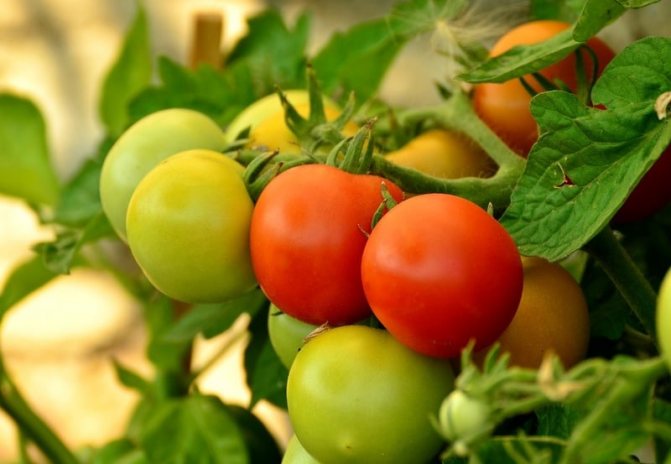

For tomato seedlings, any plastic containers with a depth of 10-15 cm are suitable
To germinate tomato seeds, you can use:
- seedling cassettes;
- peat pots;
- shallow boxes;
- plastic flowerpots;
- plastic cups.
Important! Before planting seeds, you need to disinfect them, as well as soil and containers for planting.
For disinfection, Fitosporin solution is suitable in the proportion of 1 drop of liquid per 100 ml of water. Alternative option: the soil should be calcined in the oven for 10-15 minutes at 180-200 degrees. The prepared soil must be moistened and left for 10 days, and then the seeds can be planted.
Description of how to plant seeds so that they germinate well:
- Moisten the soil.
- Make grooves 1 cm deep.
- Place the seeds at a distance of 1-2 cm.
- Cover with earth.
- Tighten the container on top with cling film.
After 3-4 days, the first shoots of tomatoes appear, which need to be placed in a well-lit place, best of all on the lightest windowsill. Since the seedlings are grown in February-March, the seedlings may lack natural light, so fluorescent lamps may be needed.
If the seedlings are sown densely, then, 7-14 days after germination, you need to pick and transplant it into separate containers.
Fertilizers
You can fertilize tomato seedlings 2-3 weeks after germination so that the stems get stronger and do not fall under their own weight. Organic fertilizers are the most suitable for feeding young tomatoes. Also, as a top dressing, you can use guano, vermicompost or humic fertilizers.
Note! To feed seedlings with purchased fertilizers, you should use half the dose indicated in the instructions.
Proper watering
After the first shoots of seedlings appear, do not immediately remove the film. The seedlings should be in high humidity for the first time. To avoid stress for the plant, the film should be removed gradually, within 1-2 weeks.
Growing errors
Although the tomato variety is Meaty, sugary and unpretentious to care for, there is always a risk of reducing the yield and quality of the fruit. There are a number of errors that affect these factors:
- wrong landing site. The cultivars need nutrient soil with low acidity. If you plant it in sandy or clay soil, the yield will be minimal;
- do not grow tomatoes next to cucumbers.These cultures are incompatible with each other, because need different care procedures;
- constriction of the stem. Some gardeners tie up the bushes so tightly that they pull the stem with a trellis, which prevents nutrients from reaching the fruits, and the yield decreases;
- untimely removal of shoots. The stepchildren are removed at the stage when their size does not exceed 3 cm. If the procedure is not carried out on time, the nutrients will not be used for the formation of fruits, but for the development of green mass.
():
It is undesirable to grow tomatoes with cucumbers in the same greenhouse, because these crops have different requirements for air humidity. Cucumber needs high humidity - up to 85%, and tomato - 45-50%. At high air humidity, the tomato is strongly affected by fungal diseases. But in the open field there are no restrictions on the neighborhood of cucumber and tomato.
Culinary application
The sourness is also pleasant. It is appropriate in various spices - ketchup, adjika, gorloder (horseradish), assorted salad preparations, as well as in tomato paste. Sour vegetables are suitable for pizza, Italian pasta sauce (pasta), tomato soup, cabbage soup, pickle. However, not all people for health reasons can consume such products.
The sweetest, sugary fruits are healthy and tasty in their natural form, in fresh salads. It is from them that the highest quality tomato juice is obtained. They are also excellent with whole-fruited barrel salting according to old recipes - without vinegar, by fermentation.
Fleshy tomatoes are pickled in wedges in gelatin. In recent years, recipes for canning small-fruited varieties (cocktail and cherry) with a special, fruit and berry aftertaste have become especially popular. Cherries are also suitable for drying and drying in the oven, electric dryer: a product similar to raisins is obtained.
Pests and diseases
Tomatoes, like other agricultural crops, are susceptible to the negative effects of pests and diseases. An infected plant can be saved if you understand the disease in time and take the necessary measures. The main diseases of tomatoes include:
- Streak - this disease is characterized by curling leaves, covering the stem and fruit with yellow spots, shedding flowers and leaves. Poor lighting contributes to the development of this disease.
- Verticillary wilting. If the plant's lower leaves dry out massively and fall off, the bushes curl up and stop developing, these are clear signs of this disease.
- Fruit cracking. Excessive watering of the bush can be the cause of this disease. An infection gets into the cracks and the fetus can begin to rot.
- Late blight or white rot. With a disease, brown spots form on the leaves and fruits. A white bloom appears on the underside of the leaves.
- Top rot - if dark green weeping spots form on the upper fruits, this is the first sign of this disease. In some cases, this disease can only be detected when a ripe tomato is cut.
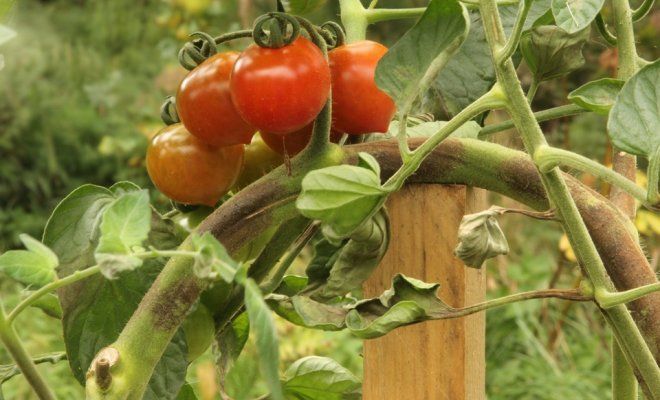

Tomatoes, especially those growing outdoors, are susceptible to various diseases and pests.
Plants, especially those planted outdoors, are susceptible to pest infestation. The main pests affecting tomatoes are:
- Whitefly is a fairly common harmful insect in most vegetable gardens. Whitefly causes yellowing and curling of foliage. The plant withers quickly. It covers the tomato bush with specific secretions on which fungi can develop.
- Slugs - this pest eats both the foliage and the fruits of the plant. After the fruit is damaged by slugs, the decay process begins.
- A spider mite is a small insect that can be visually observed on a plant as a small white dot. He enmeshes the leaves with white cobwebs and sucks out all the juices from them. Affected leaves turn yellow and brown spots appear on them.
- Medvedka is a large insect that damages the root system of the plant.
In order to protect the plant from pests and harvest a healthy crop, you must follow all the rules for the care and cultivation of tomatoes. Use a variety of fertilizers and fluids to control disease as instructed.


